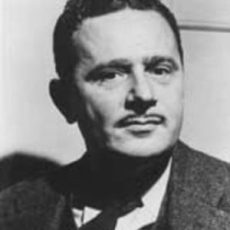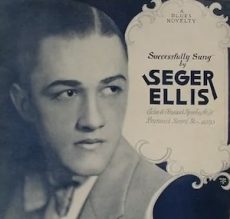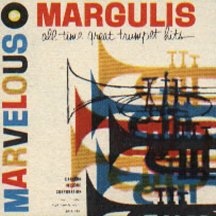
Daily Dose Of Jazz…
Lawrence Brown was born on August 3, 1907 on August 3, 1907 in Lawrence, Kansas. When he was about six or seven years old his family moved to Oakland, California. He began playing the violin at a young age, but quickly grew tired of it and turned to playing the tuba in his school’s band.
Coming from a musical background, his mother played the organ and the piano and he often sang as a part of his father’s sermons when he preached at the A. M. E. Church. Brown discovered the trombone while doing janitorial work at his father’s church and wanted to replicate the sound of cello on a trombone.
Beginning his career with Charlie Echols and Paul Howard, in 1932 he joined Duke Ellington’s band. He was featured with the band every year on compositions such as Blue Cellophane and Golden Cress. Leaving Ellington’s band in 1951, Lawrence joined Johnny Hodge’s band, where he stayed for four years. After this stint he took a five year position as a session player with CBS.
He rejoined Ellington in 1960 and stayed with him until 1970. After leaving Ellington’s band the second time at the age of 63, Brown stopped performing.
Trombonist Lawrence Brown, whose fast technical style inspired trombonists from Tommy Dorsey to Bill Harris, died on September 5, 1988 in Los Angeles, California, at the age of 81.
More Posts: history,instrumental,jazz,music,trombone

Jazz Poems
STRANGE FRUIT
Southern trees bear a strange fruitBlood on the leaves and blood at the root
Black body swinging in the Southern breeze
Strange fruit hanging from the poplar trees
Pastoral scene of the gallant South
The bulging eyes and the twisted mouth
Scent of magnolia sweet and fresh
And the sudden smell of burning flesh
Here is a fruit for the crows to pluck,
For the rain to gather, for the wind to suck
For the sun to rot, for a tree to drop,
Here is a strange and bitter crop.
LEWIS ALLANfrom Jazz Poems ~ Selected and Edited by Kevin Young
More Posts: book,classic,collectible,history,jazz,library,poet

Daily Dose Of Jazz…
Ivor Mairants was born in Rypin, Poland on July 18, 1908 and moved with his family to the United Kingdom in 1913 where he attended Raine’s Foundation School in Bethnal Green. He began learning the banjo at the age of 17 and became a professional musician three years later.
In the 1930s he was a banjoist and guitarist for British dance bands led by Bert Firman, Ambrose, Roy Fox, Lew Stone, Geraldo, and Ted Heath. In 1950 Mairants established the Central School of Dance Music in London, England which he ran for 10 years. All instruments were taught at this establishment, but emphasis was given to guitar. Among the teaching staff at the school were Johnny Dankworth, Jack Brymer, Kenny Baker, Bert Weedon and Ike Isaacs, and Eric Gilder. In 1960 Mairants handed the school over to Gilder, who renamed it as the Eric Gilder School of Music.
In the Sixties and Seventies his guitar playing was often heard on television, radio, film soundtracks, and many recordings with the Mantovani orchestra and with Manuel and his Music of the Mountains. His 1976 recording of the Adagio from Joaquin Rodrigo’s Concierto de Aranjuez with Manuel sold over one million copies.
He wrote many occasional pieces for jazz bands, was a columnist for Melody Maker, BMG, and Classical Guitar, and was a member of the Worshipful Society of Musicians, a British guild, and a Freeman of the City of London. In 1997 the Worshipful Society inaugurated an annual competition for the Ivor Mairants Guitar Award.
Guitarist, composer and teacher Ivor Mairants, who with his wife Lily in 1958 he created the Ivor Mairants Musicentre, a specialist guitar store in London, died on February 20, 1998.
More Posts: composer,educator,guitar,history,instrumental,jazz,music

Daily Dose Of Jazz…
Seger Pillot Ellis was born on July 4, 1904 in Houston, Texas and began his career as pianist playing live for a local Houston radio station in the early 1920s. In 1925, he was added to the orchestra of Lloyd Finlay for a recording session for Victor Records, and was also allowed to cut two piano solos. This led to Ellis being invited to Victor’s regular recording studio in Camden, New Jersey, to cut a number of piano solos, all or most of them compositions of his own. These were among the earliest records Victor made using the new electric microphone and recording equipment.
After his first recording experiences, Ellis returned to Houston and radio work as well as playing in vaudeville theaters. During this period Seger began adding singing to his piano playingwhich led to an invitation to New York City to make vocal test recordings. His first issued vocal record was “Sunday” on the Columbia label, then a string of records for Okeh Records.
Ellis selected many of the best jazz musicians of the time, including Tommy and Jimmy Dorsey, Joe Venuti, Eddie Lang, Andy Sannella and Louis Armstrong. His first recording career ended in 1931, however, in the late Thirties he returned to conducting and singing with his own big band, Choirs of Brass Orchestra. Later in his career, he focused more on songwriting, but recorded sporadically as well as playing the piano.
In 1939, Ellis reorganized and his new band featured the conventional four-man reed section. He disbanded in 1941, and was enlisted in the United States Army Air Forces in 1942. After his discharge he moved back to Texas and began to be less active as a performer and more a songwriter and composer. His compositions were recorded by Harry James, Gene Krupa, Bing Crosby, Count Basie with a Mills Brothers vocal.
Pianist and vocalist Seger Ellis, who made a few brief film appearances in collaboration with director Ida Lupino, died on September 29, 1995 in a Houston retirement home.
Acquaint an inquisitive mind with a dose of a Houston pianist who is in the company of musical genius around the world as a member of the jazz canon…
Seger Ellis: 1904~1995 | Piano, Vocal
More Posts: bandleader,history,instrumental,jazz,music,piano,vocal

Daily Dose Of Jazz…
Charlie Margulis was born on July 24, 1903 in Minneapolis, Minnesota into a family of accomplished theater music performers in the 1920s. That was his introduction to the professional musician’s life which led to him working with territory bands led by Eddie Elkins and Paul Specht among others. Heading to Detroit, Michigan in 1924 he joined Jean Goldkette’s Book-Cadillac Hotel Orchestra under violinist Joe Venuti. His next move was to work with bandleader Ray Miller during a period when the trumpeter roamed back and forth between Detroit and Chicago, Illinois.
By 1927 Charlie began working with Paul Whiteman, the relationship lasting nearly three years and concluding in a traditional manner for progressive jazz bands, with various sidemen stranded on the West coast. He managed to straggle back to New York City, bad luck perched on his shoulder. He got so sick that he had to return to California in order to recover but by the middle of the ’30s was well enough to log in for a New York City recording session with the Dorsey Brothers.
Caught up in the excitement of the new swing style, Margulis tried out life as a bandleader as well as spending a year on tour with Glenn Miller. His role as a bandleader was offset with work in the recording studios embracing doo-wop and r&b styles. He would go on to freelance, sometimes under the name Charlie Marlowe in California, under his own name in New York City during the Forties and Fifties.
Trumpeter Charlie Margulis died on April 24, 1967 at the age of 63 in Little Falls, Minnesota.
More Posts: history,instrumental,jazz,music,trumpet





